5 min read
Share this post
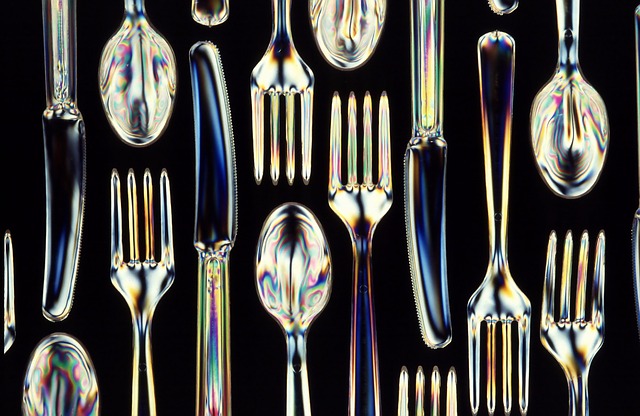
Quantifiers are used to convey an idea of the amount (or quantity) of a noun being expressed. The English language contains a large amount of different noun quantifiers, and each one is typically used with a specific set of nouns (e.g. we wouldn’t typically say a glass of oil).
In our three lesson plans dedicated to noun quantifiers we cover all commonly used quantifiers such as slice, loaf, piece, bar, jug, bowl, bottle (and many more). Our three lesson plans, N8.1 – N8.3 can be found here.
In our first lesson we first take a quick review of uncountable and countable nouns and the use of a/an and some, before introducing the concept of quantifiers with plural countable nouns and uncountable nouns. Throughout the rest of the lesson, the student discovers different expressions of quantity, and the typical nouns that they are used with, mostly through the use of picture matching exercises. We focus on some of the most common noun quantifiers including a glass, jug, bowl and packet. We use the concept of shopping to illustrate many of the examples:
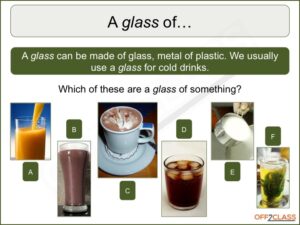
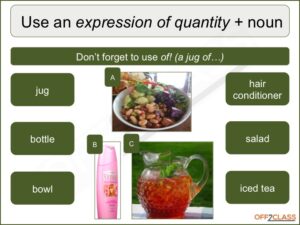
In our second lesson we introduce a larger vocabulary of noun quantifiers such as bag, bar, carton, tube, tub, bunch and box. We mix these noun quantifiers with those already taught in the first lesson in our series. We also introduce the concept that a container (which “holds” uncountable and plural countable nouns) is a countable noun itself and can take on the plural form (e.g. cartons of milk). We also make special mention of the use of a dozen vs. a carton of eggs.
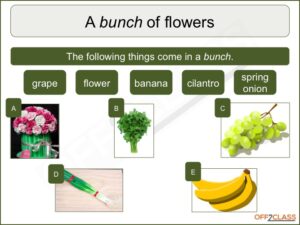
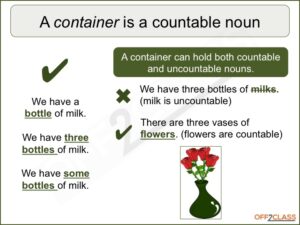
In our third noun quantifier lesson we take a look at expressions of quantity related to cooking and recipes such as a pinch, spoonful, cup and handful. We also pay special attention to the use of sheet and piece to describe paper. We finish the series with mixed examples covering all the different noun quantifiers we’ve covered across all three of our lessons:
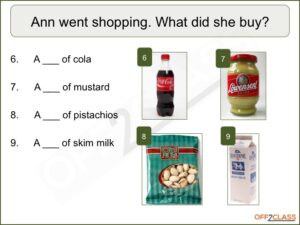
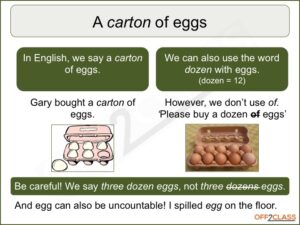
Share this post



Leave a Reply